Characteristics and description of the variety of pepper Volovye ear
Sweet peppers are always popular with vegetable growers. Pepper Volovye Uho is a variety that is increasingly grown in garden beds and greenhouses. The benefits of pepper fruits are widely known, so gardeners will always find a place on the plot for seedlings of this vegetable crop.
Description and main characteristics of the variety
Why has Volovye Uhoho been one of the most popular varieties for more than one season? What are the characteristics that attract growers, despite the fact that caring for this vegetable crop is not as easy as for tomatoes or cabbage?
It turns out that dense and large fruits of this variety contain a large amount of vitamin C and other active substances. Peppers are sweet and crunchy, so they enhance the flavor of any fresh salad or other dish.
The description of the variety should begin with the maturation of the crop. Volovye Ukho is an excellent mid-season variety: from the moment of the emergence of friendly shoots to the technical maturity of the fruit, a little more than 3 months pass, and the full ripeness of the crop can be expected in 4 months. The variety is intended for cultivation in open ground and in unheated greenhouses.
The bushes are medium in size, the shoots do not grow higher than 65 - 70 cm. Bushes are spreading in width - at least 30 cm in radius, therefore it is not recommended to plant the seedlings of the Ox Ear on the beds closer than 0.5 m from each other.

Shoots are erect, well branching, quite strong, up to 0.7 m in height, average foliage. The foliage is dense, simple, of medium size, the edges are slightly wavy, the color is dark emerald. The upper side of the leaves is slightly glossy.
Due to the rather voluminous foliage, Volovye Ukho does not tolerate the hot season well. If the pepper is planted in a greenhouse, condensation will settle on the leaves, which negatively affects the plants.
Ripe peppers are shaped like ox ears (which is why they got this name) - elongated, like a cone, slightly corrugated. Their length can reach 15 - 16 cm. Unripe fruits are green, and at the stage of full maturity they become bright red with a raspberry tint.

The peppers are fleshy, sweet and juicy, with a wall thickness of about 7 mm. The average weight of peppers is 130 - 145 g, but with good care you can grow large fruits - up to 200 - 240 g in weight. The yield from one bush is usually 2.5 - 3.2 kg. The commercial qualities of the ripe crop are high. It does not always make sense to wait until the whole crop is ripe, because the fruits at the stage of technical maturity after harvesting ripen perfectly in a cool room.
The characteristic of Volovye Ear pepper will be incomplete without a story about immunity to diseases and keeping quality. The resistance of this variety to major diseases and pests is average.Due to the rather dense walls, ripe peppers are perfectly stored in a cool place, retaining their presentation and good taste. The harvested crop can be well transported over long distances.
Ripe peppers are universal: the fruits of this variety are consumed fresh, added to salads, suitable for preservation (especially in lecho).
Advantages and disadvantages of the variety
The undoubted advantages include:
- high productivity;
- good commercial qualities of the ripe crop;
- excellent taste;
- versatility of ripe fruits;
- the crop can be kept fresh for a long time, retains valuable properties when frozen for a long time.
There are also disadvantages of this variety of pepper:
- bushes do not tolerate heat well;
- destructive condensate settling on foliage in a greenhouse.

Volovye Ear is picky about care, otherwise it is difficult to get high-quality fruits.
Nuances of growing peppers Volovye Ear
To get at the end of the season fruits with the same excellent presentation as on the seed packaging, you should work hard, since this variety is picky about care.
Cultivation should be started with careful selection of the seed. Usually, those seeds that are bought in specialized stores from well-known companies have already passed all the pre-sowing preparation:
- only viable seeds were selected;
- the material is disinfected and treated with growth stimulants.
It is better to soak the pepper seeds for a couple of hours before planting. The containers are filled with the prepared soil mixture for vegetable plants. It is better to plant seeds in small cups, a couple of pieces in each, because peppers should not be subjected to unnecessary transplants (including picking) - the plants are very sick after such a procedure. The seed should be buried in the soil by 0.5 - 0.8 cm. After planting, the soil is moistened and covered with polyethylene on top to create the effect of a greenhouse.
After the emergence of mass shoots, the film is removed from the containers, the weak plants are removed, leaving only strong seedlings. In the first ten days of May, the peppers are ready for planting in protected ground (at the stage of 5 - 7 permanent leaves). Seedlings are planted in open ground in mid - late May, when the danger of spring frosts has passed.
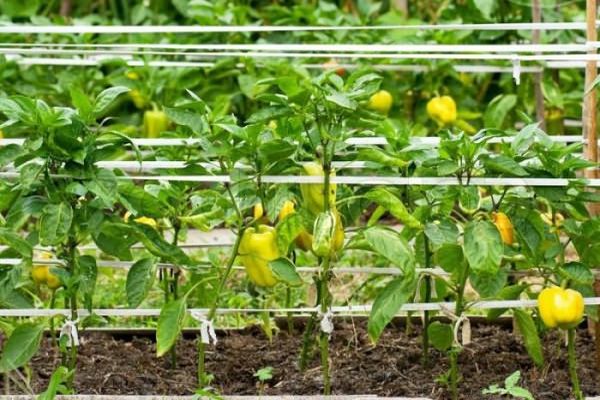
When preparing beds for seedlings, you should remember about the rules of crop rotation. Best precursors for sweet peppers:
- peas, beans, soy;
- various green manures;
- cucumbers;
- dill.
It is categorically not necessary to plant peppers after tomatoes - crops are prone to the same diseases. The landing site must be sunny. In greenhouse conditions, the room should be regularly ventilated.
After planting, care consists in regular watering, loosening the soil, removing weeds and systematically applying top dressing.
Particular attention should be paid to watering: irrigation is carried out every 3 days, for each pepper bush - at least 1.5 liters of water. Before the appearance of ovaries, it is better to use sprinkling; during the setting of fruits and their ripening, moisture is introduced under the root. In the process of growth and ripening of the crop, feeding with superphosphate and organic fertilizers (slurry or chicken droppings) is alternated.
Reviews of vegetable growers who regularly grow Volovye Ear indicate that this variety is resistant to the tobacco mosaic virus.
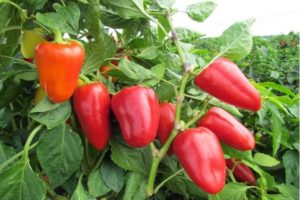
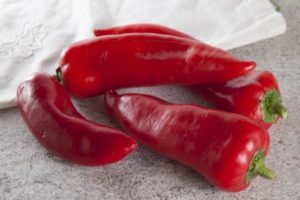
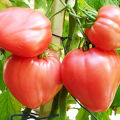

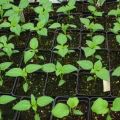



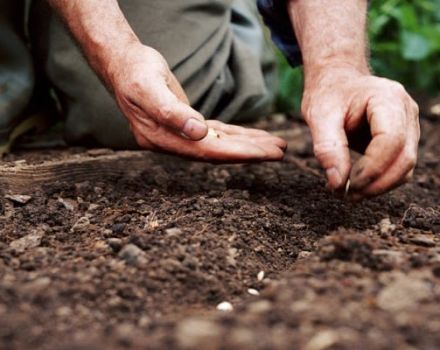
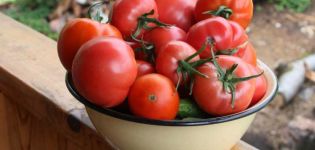
A wonderful variety. Whether for a salad or for stuffing, it fits perfectly.I have been growing it for the second year, but only last season I began to add a growth activator BioGrow... I am more than happy with the yield! One and a half times higher than before.